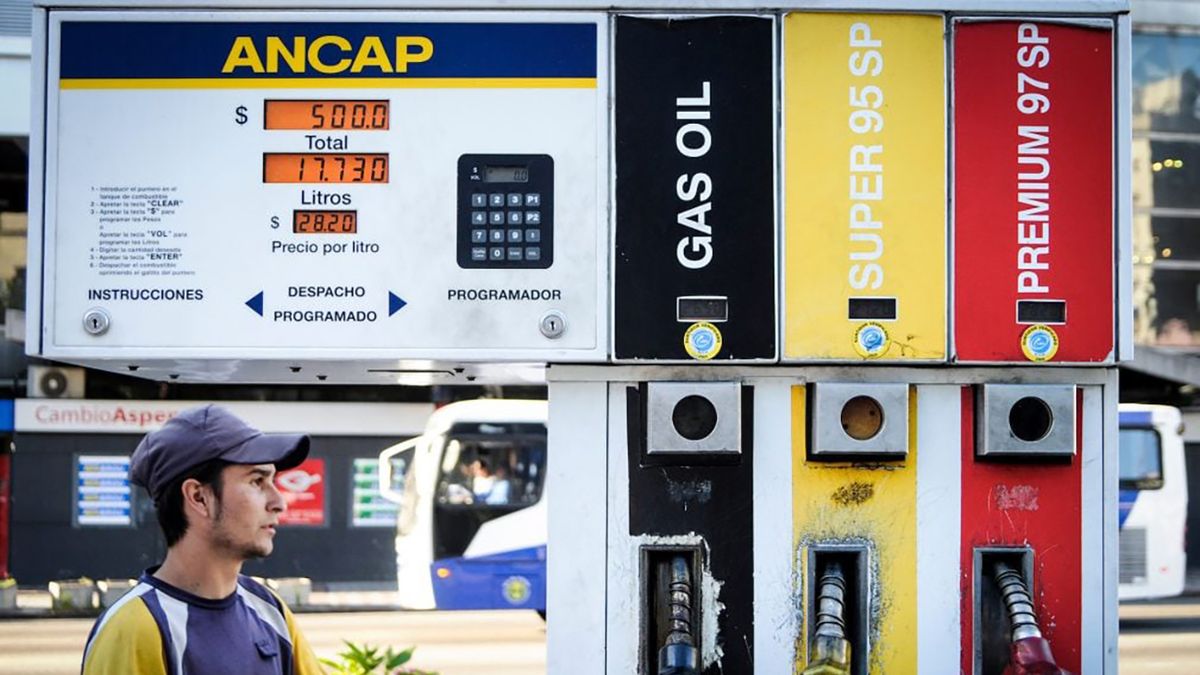The minister of Industry, Energy and Mining (MIEM), Omar Paganini, stated that “most likely” the fuels experience an increase in Uruguay in September, although the government will try to make the increase in international reference prices it is not transferred in its entirety to the suppliers of the country.
Yesterday the report of Import Parity Prices (PPI) of the Regulatory Unit for Energy and Water Services (Ursea), the document that the Executive Power takes as a basis to define the price of fuels for the coming month. The report projected a rise of 6.70 pesos per liter in gasoline and 3.70 pesos per liter in diesel.
“What the projection indicates is a significant increase at the international level that was due to a increase in the price of oil in the order of 10% average in the month and, then, projected to derived fuels, gives a significant increase for gasoline of the order of 7 pesos and for diesel of the order of 4 pesos, and these increases are the indicators at the international level”, said Paganini, to the regard.
This increase for the second half of the year was already expected by the authorities who, in addition to the international context, must face a reduction in the refinery margin of the National Administration of Fuel, Alcohol and Portland (Ancap) —Due to the union conflicts faced by the state oil company and the technical stoppage scheduled for the oil refinery The Tile—, which was used throughout the year to maintain the values in the pumps without abrupt variations.
Although Paganini added that they still have to make the decision to “transfer that to the public rate”, which will be done in the next few days, as indicated by the official procedure, the minister also announced that, although there will be a rise in fuel, “it is thought not to that totality”. “We are going to do everything possible so that not be that totality”, he assured.
Asked if the fuel that will be circulating in September is the one produced by Ancap or already the importeddue to the scheduled shutdown of the refinery, the head of MIEM said that “in September there will probably still be Ancap, but you also have to think about the replacement and how long the shutdown will be and the additional costs that the shutdown it implies”.
The Ursea report
La Ursea handed over to the government the report of Prices Import Parity (PPI) of petroleum products produced monthly by the ursea, in line with the increase in values internationally. Following this upward revision, the Ministry of Industry, Energy and Mining (MIEM) and the Executive power They will have to decide in the coming days if they decide on a new update, after last month’s increase, the first of the year.
In his survey, the ursea projected that the price of super naphtha in September it is 78.05 pesos, which represents an increase of 8.56% with respect to the current value (71.39 pesos). With respect to diesel 50S, the expected price also marks an increase of 6.96%, which would raise the value to 56.68 pesos, from the current 52.99 pesos.
It is worth noting that during the month the average price of a barrel of brent oil rose 7.46%, going from 80.11 dollars in July to 86.09 dollars, after a week in which weak economic data and strong market dollar limited oil profits.
Source: Ambito




